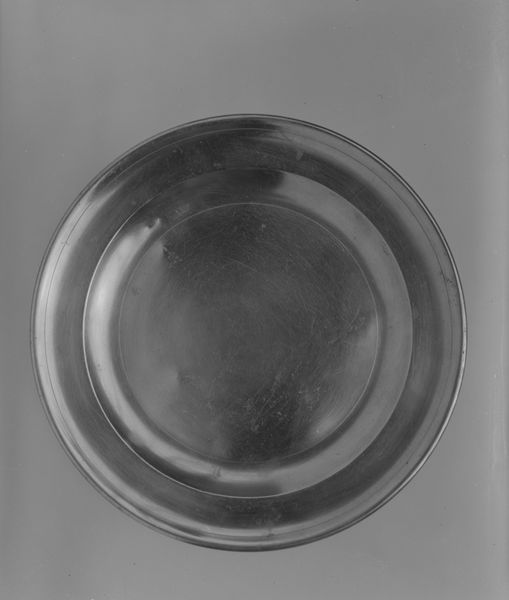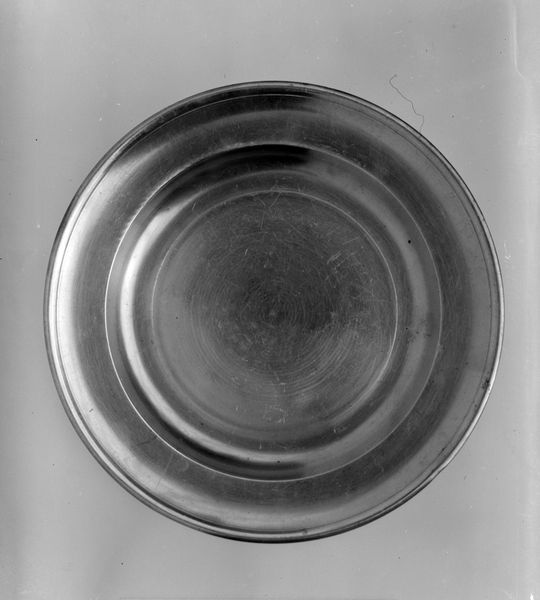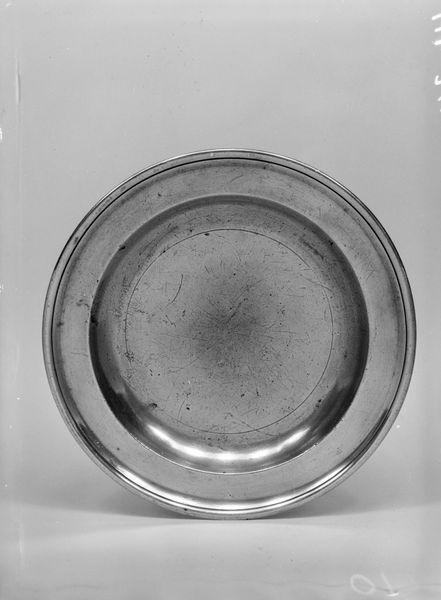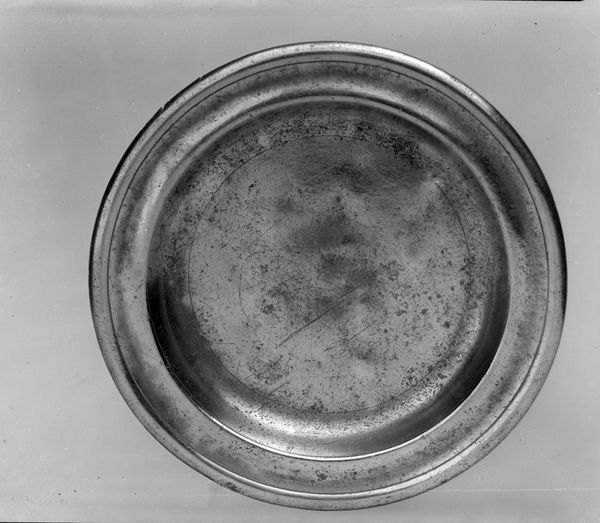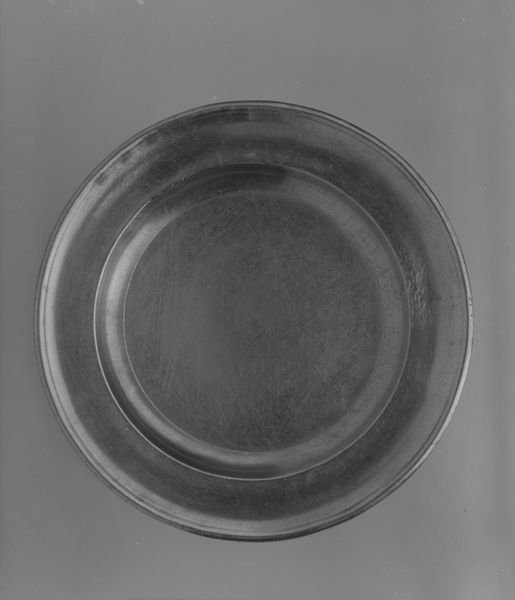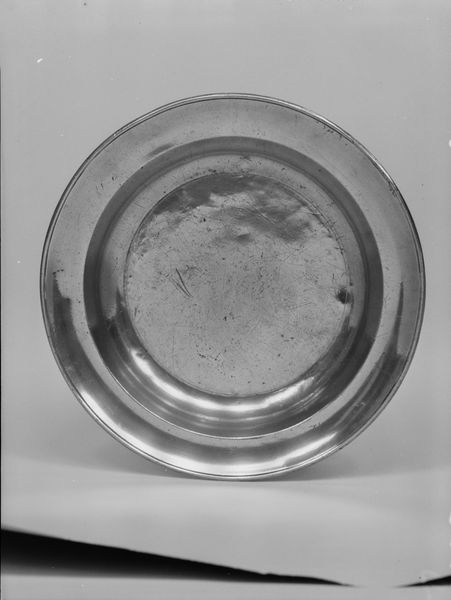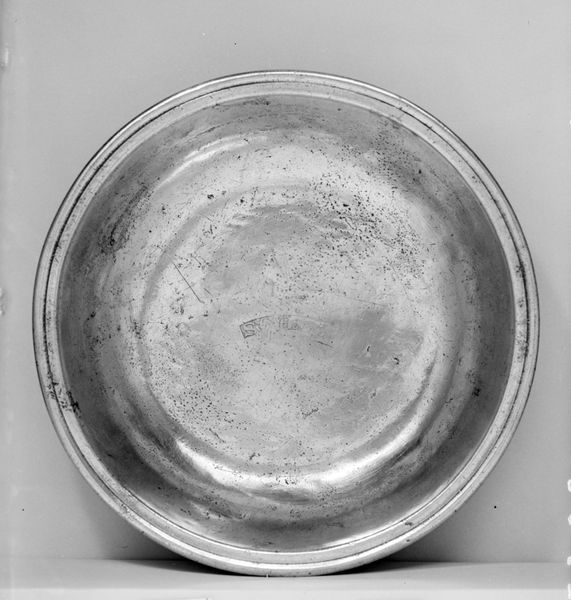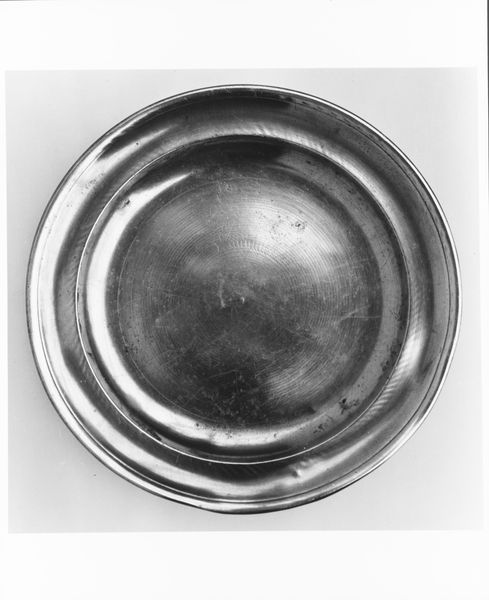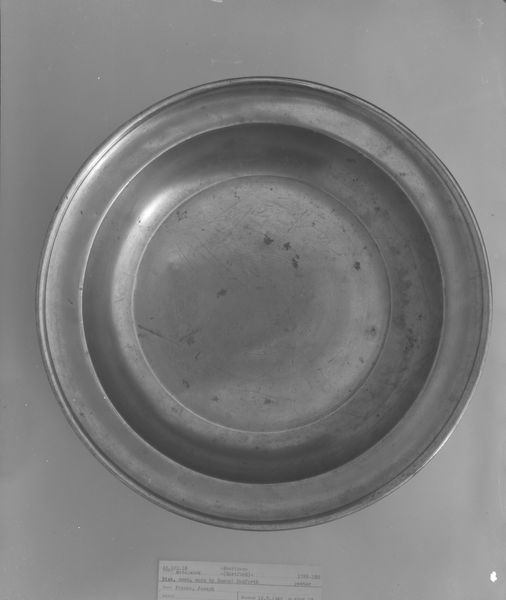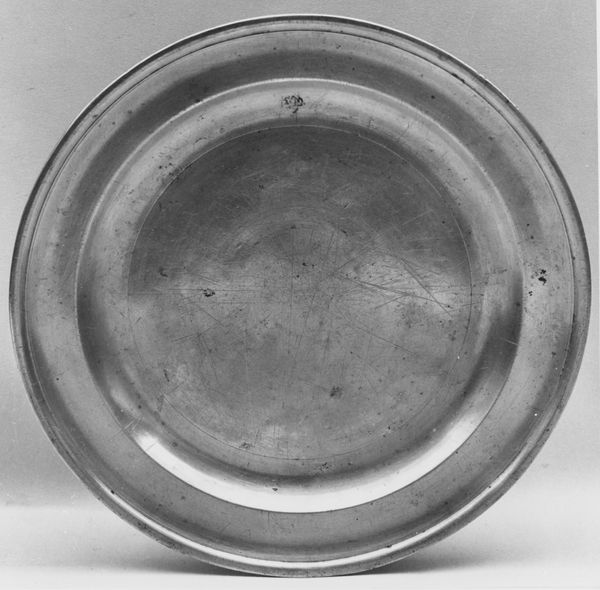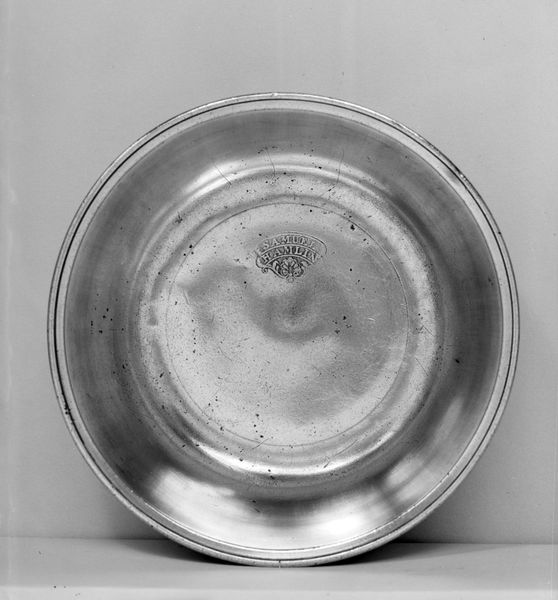
silver, metal
#
silver
#
metal
Dimensions: H. 3/4 in. (1.9 cm); Diam. 8 7/8 in. (22.5 cm)
Copyright: Public Domain
Curator: Let’s turn our attention to this plate, crafted from silver sometime between 1794 and 1830. You’ll find it here at the Metropolitan Museum of Art. Editor: It’s quite simple, isn’t it? I get this strange sense of calm looking at it. Just a smooth, circular form, reflecting the light. Feels almost meditative. Curator: Indeed. The plate's aesthetic value lies in its unadorned form, offering a clear example of minimalist design within its historical context. The reflectivity is key, interacting dynamically with ambient light to transform its visual presence. Editor: Though I'm imagining all sorts of foods being served on it back then, and that makes it really beautiful; someone sitting down, hoping to enjoy a lovely meal after a long hard day. Is that dent I see evidence of the bumps it endured? Curator: Such imperfections underscore the object's history and authenticity. Observe how the circular form is meticulously achieved; we could analyze the concentric nature of the piece, noting how it frames a void—an anticipation of purpose. Editor: You make it sound like a grand statement, but for me, it remains intimate. This single plate represents countless meals, moments of connection. Did someone engrave initials near the edge, as if making an indelible mark? Curator: Yes, you're sharp. One could analyze such iconography employing methods akin to those found in epigraphy. It provides context as to the potential owner or manufacturer. Editor: To think something so simple, so utterly devoid of flashy embellishments, can spark so much… contemplation, perhaps? It's a testament to its underlying form, isn’t it? Curator: Precisely. And as we draw to a close on this plate, remember to consider its elegant form, timeless nature, and its important place in material culture.
Comments
No comments
Be the first to comment and join the conversation on the ultimate creative platform.
